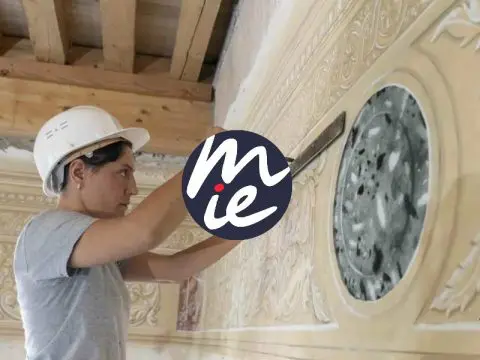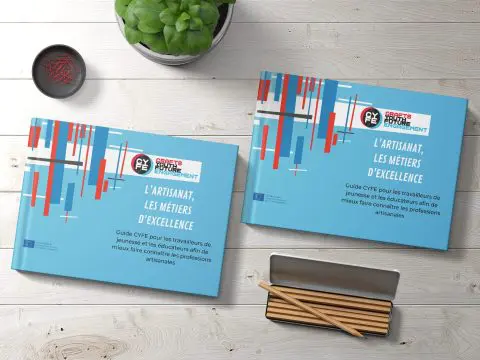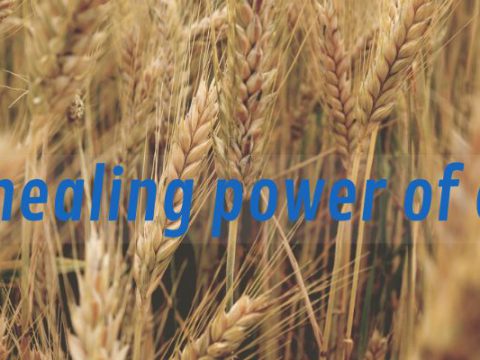By Claudia Torlino
At the end of 2018, the Intergovernmental UNESCO Committee for the Safeguarding of Intangible Cultural Heritage decided positively on the inclusion of resist block printing and indigo dyeing in the international UNESCO list, approving the previous request made by Austria, Czechia, Germany, Hungary and Slovakia.
A Brief History
Blueprint came to Europe from Asia, precisely from the traditional indigo-dyeing countries of India, China, Indonesia and Japan. Thanks to the Dutch East India Company, founded in the 17th century, blueprint was established in central Europe. Initially blueprint fabrics were particularly popular among the bourgeoisie, but they gradually spread to rural villages. During the 18th and 19th centuries, regional craftsmen travelled abroad to learn the new technique, forming guilds and associations, and documenting their routes in travel journals. This resulted in a significant exchange of designs and patterns among practitioners.
Historically, indigo was a natural dye extracted from the flowers of some plants of the Indigofera genus, in particular Indigofera tinctoria, but also Isatis tinctoria (woad tree). Woad flowers are actually yellow, but the dye extracted from their stems is unexpectedly blue, resulting in a bright indigo hue.
Picture: Isatis tinctoria, by CC BY-SA 3.0,
The TechniqueAs stated in the related Convention for the Safeguarding of the Intangible Cultural Heritage, Blaudruck/Modrotisk/Kékfestés/Modrotlač, which translates directly as blueprint or blue-dyeing, is a technique which refers to the practice of printing a dye-resistant paste onto a cloth before dyeing over it with indigo dye. Following immersion in the indigo vat, the areas of cloth under the printed pattern remain white or undyed.
Picture: Blueprint tie, by Von Gernek – Eigenes Werk, CC BY-SA 2.5,
“To apply the designs onto cloth, practitioners use hand-crafted blocks, up to 300-years-old, which are either made from carved wood or set with brass pins or strips, and show regionally inspired patterns as well as generic designs or Christian motifs. The representation of local flora and fauna is interrelated with the local culture of the regions. The blocks transfer a dye-resistant paste to the cloth that results in the applied design remaining white or undyed after the dyeing process in an indigo vat. Originally, the resist paste was made of starch-based substances, such as wheat, rice, maize and other cereal crops, while today the main ingredients are water, clay and gum arabic. What ingredients are used, how they are mixed, in what proportions, as well as information about additional elements are well-kept secrets of each practitioner. Moreover, each generation goes on to develop the paste, based on their individual experience of the technique”.
Picture: Printing of dye-resistant paste onto the fabric, by Christoph Münch, CC BY-SA 3.0,
Since there is no formal training in terms of apprenticeships in any state, the knowledge and skills related to the element are passed on informally and orally from each generation onto the next. Traditional knowledge is still based on mainly family-owned journals dating back to the 19th century and passed on through observation and hands-on practice. There are many well-kept secrets relating to the composition of the indigo-resist paste and its traditions.
“The indigo dyeing process is achieved by stretching the printed fabric onto a special iron frame, immersing it in the indigo bath and leaving it under the surface (initially for a period of 5 to 10 minutes). As the cloth is removed, it takes in oxygen from the air, and the fabric turns from yellow to green to blue; the depth of tone on the cloth becomes deeper with each immersion in the indigo vat”.
Indigo is subject to oxidation, which means it is highly influenced by the weather. Whether the surrounding environment is hot, cold, wet, or dry; it will have an impact on the fabric and therefore on the outcome of the product. It is a very long and delicate process.
European Heritage
There is a small but tight community of blueprinters all over Europe, interconnected by the desire to have an impact. They have a family-like bond and they are fighting against the disappearance of this technique every day. This cooperative spirit can be seen, for example, at the annual international market for printers in Gutau, Upper Austria. Through sharing the history, knowledge and experience of a joint practice, practitioners find meaning, purpose and direction for their individual sense of identity.
“You learn blueprint your whole life” says Mária Kovács, who in 1989 opened the first independent blue-dyeing shop in Hungary. She has been creating modern styles respecting the traditional technique and the heritage since then. It is a contemporary and fashionable fabric, yet it has a rich history and tradition. Her daughters, Annamária and Veronika Panák are the 7th generation of the family; they continue the over 140 years old family tradition. The family believes in the importance of safeguarding: one of their main goals is to present the blue-dyeing profession to more and more people, and therefore they fought for the technique to be enlisted as UNESCO heritage.
Jiří Danzinger, owner of one of the Czech Republic’s two surviving blueprint workshops says: “As far as the technology is concerned, nothing has changed. Only the people have changed”. He is the 11th generation of a family living off this profession in the village of Olešnice. The dyer is still using the original workshop, just like his father and grandfather, preserving traditional methods through generations.
Today, blueprint fabrics are most commonly worn by folk dance groups, folk bands, as well as individuals at festive or special events, such as traditional celebrations and weddings. However, blueprint products are starting to appear in other areas of life as well. Particularly young designers are making increasing use of the products and, consequently, are promoting local cultures across borders.
Sustainable Development
The technique contributes to sustainable development as well. Blueprint involves not only printing and dyeing, but the whole process from the preparation of the raw materials, their spinning, weaving and polishing. This results in a cooperation between local producers of fabric materials with educational and academic institutions and economic enterprises. It promotes local development of rural areas, thus improving the quality of life of people living in said areas. Moreover, blueprint encourages social cohesion and gender equality: it is a family-run business, each member participating in the production regardless of their gender; in fact more than half of the workshops are owned by women.
Practitioners are trying to develop new recipes for their pastes that are effective as well as ecologically sustainable. They initially used to dye with woad (Isatis tinctoria), but, with the introduction of synthetic indigo in 1880, that came to a halt. However, it is now making a comeback: local plants are being analysed to be used again as natural dyeing alternatives, biodegradable and safe for the environment.
SOURCE and LINKS :




